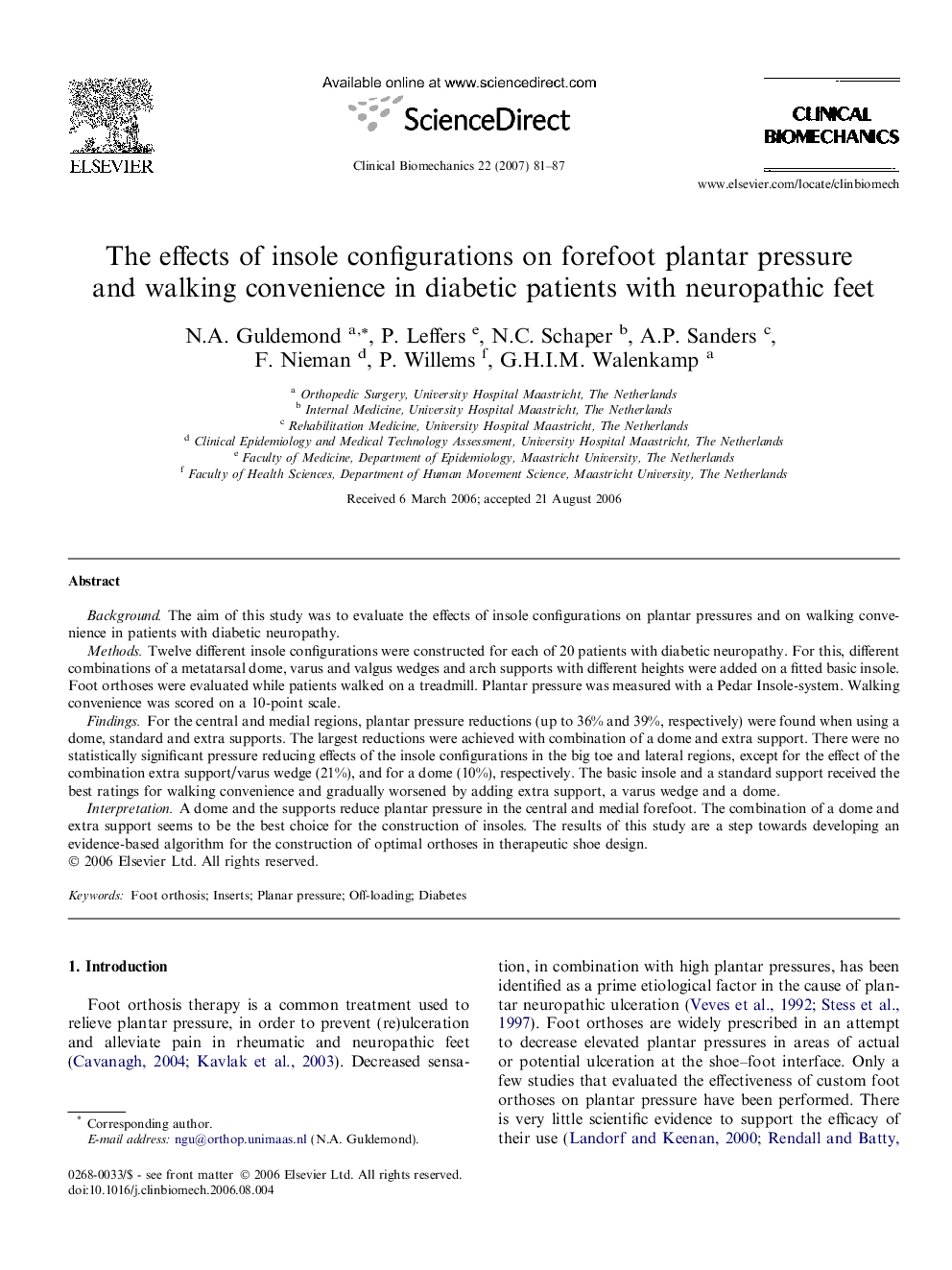| Article ID | Journal | Published Year | Pages | File Type |
|---|---|---|---|---|
| 4051795 | Clinical Biomechanics | 2007 | 7 Pages |
BackgroundThe aim of this study was to evaluate the effects of insole configurations on plantar pressures and on walking convenience in patients with diabetic neuropathy.MethodsTwelve different insole configurations were constructed for each of 20 patients with diabetic neuropathy. For this, different combinations of a metatarsal dome, varus and valgus wedges and arch supports with different heights were added on a fitted basic insole. Foot orthoses were evaluated while patients walked on a treadmill. Plantar pressure was measured with a Pedar Insole-system. Walking convenience was scored on a 10-point scale.FindingsFor the central and medial regions, plantar pressure reductions (up to 36% and 39%, respectively) were found when using a dome, standard and extra supports. The largest reductions were achieved with combination of a dome and extra support. There were no statistically significant pressure reducing effects of the insole configurations in the big toe and lateral regions, except for the effect of the combination extra support/varus wedge (21%), and for a dome (10%), respectively. The basic insole and a standard support received the best ratings for walking convenience and gradually worsened by adding extra support, a varus wedge and a dome.InterpretationA dome and the supports reduce plantar pressure in the central and medial forefoot. The combination of a dome and extra support seems to be the best choice for the construction of insoles. The results of this study are a step towards developing an evidence-based algorithm for the construction of optimal orthoses in therapeutic shoe design.
